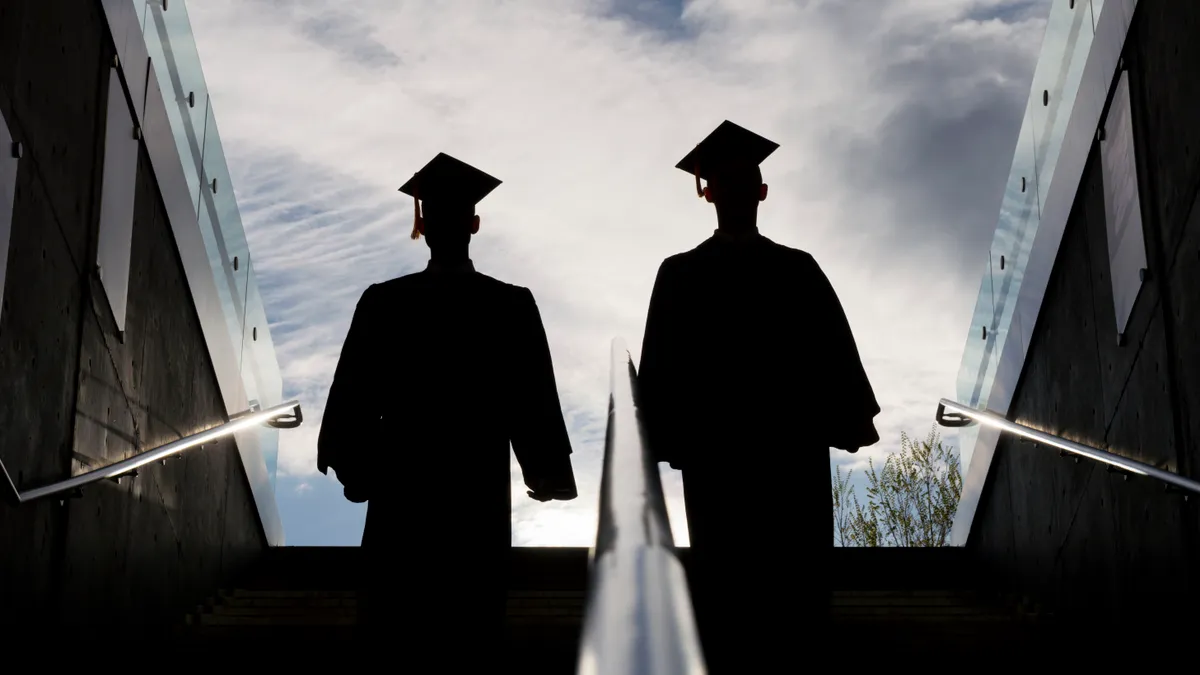Dive Brief:
- Community colleges that begin offering bachelor’s degrees see enrollment increases, including among low-income students and those who are age 25 and older, according to new research published in Community College Review, a peer-reviewed journal.
- However, the research is inconclusive on whether community college baccalaureate degrees increase enrollment of students of underrepresented races, which include those who are African American, Hispanic, Native American and multiracial.
- Opponents of community colleges offering bachelor’s degrees often argue that these programs cause institutions to drift away from their missions of serving underrepresented students. But the new research suggests that the programs actually reinforce community colleges’ commitments to certain disadvantaged student populations.
Dive Insight:
Around half of states allow at least some community colleges to offer bachelor’s degrees, and legislative efforts to authorize four-year programs at these institutions have accelerated over the past decade, according to a 2021 report from New America, a left-leaning think tank.
Proponents say bachelor’s degrees at two-year colleges can widen access to higher education and help states meet critical workforce needs. But community college baccalaureate programs have many detractors, who often argue they’re encroaching on the territory of four-year colleges.
Opponents also contend that they’re causing community colleges to abandon their missions of providing educational access to underserved populations.
However, the new research suggests those concerns may be overblown.
It found that adoption of community college baccalaureate degrees is associated with roughly a 6% to 9.6% increase in total fall enrollment. It also is associated with an 11% to 16% increase in full-time enrollment, suggesting that four-year degrees at two-year colleges boost enrollment intensity.
Some of that growth is coming from historically underrepresented populations. Low-income students see a roughly 9% to 15% enrollment boost, while adult students see increases between 8% and 10%.
However, the impacts on underrepresented racial minority students aren’t as clear. While some models show increases, others don’t yield significant results, according to the paper.
“The takeaway that we’re confident in is that there does seem to be no significant divestment in underrepresented minoritized students, but that we don’t see consistent evidence of significant increases of their enrollment post-adoption,” said Jeremy Wright-Kim, a higher education professor at the University of Michigan and the article’s author.
That finding suggests community college baccalaureate degrees may be more effective at attracting other groups of underrepresented students, such as low-income and adult learners, than racial minority groups. Community colleges that adopt four-year degrees should ensure these offerings don’t narrow their efforts to provide educational access, according to the paper.
The research also suggests that allowing community colleges to offer bachelor’s degrees could help states meet college attainment goals. Although their specific targets differ, many states are hoping to increase the shares of their populations with a college credential — a goal that will partly depend on their ability to enroll adults in higher education.
“Across the populations I looked at, I see most consistent evidence of being able to serve adult students,” Wright-Kim said. “It seems likely that this can be a tool that states could leverage.”















